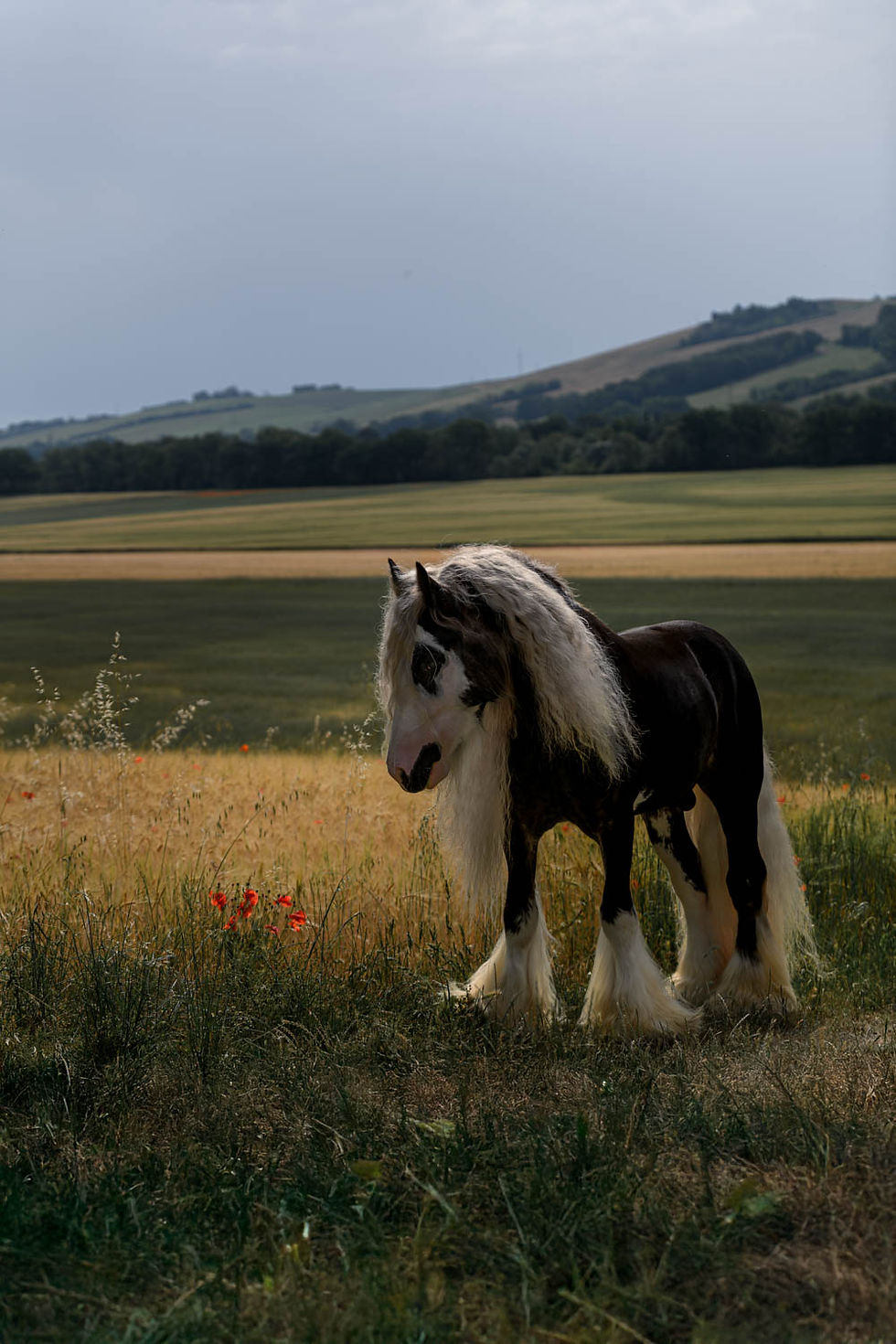What many people never realize about equine photography and neurodivergence
- Caroline Nijs

- May 8
- 3 min read
Deeper insights from someone who lives both worlds
If you think equine photography is just about pretty portraits of horses and their humans, you’re in good company. Most people assume it’s about capturing a connection or freezing a beautiful moment. And while it can be that, there’s a whole other layer happening when the human in the photo is neurodivergent.
As someone who’s both neurodivergent and experienced in equine photography, I see what often goes unnoticed. Here are five insights that rarely make it into conversation but deeply shape the experience and the images that come from it.
1. Masking disappears around horses (and the camera absolutely catches that)
Masking is quite literally a survival tactic. It is suppressing natural behaviors to appear more socially "acceptable" in this neurotypical society. For most neurodivergent people, masking is constant. It is utterly draining, sometimes even unnoticeable to those around us—but the effort behind it is very real.
Horses, though, have no expectations of how you should behave. They respond to what’s real. That means neurodivergent people are able to let go of the mask when they are around horses. And so even during a photoshoot, it can happen without realizing it.
And the camera? It picks up on that. That authenticity becomes visible, and the resulting photo says more than words ever could.
2. Sensory regulation shows up in the final image—whether you realize it or not
Sensory overload isn’t merely a distraction—it can make it hard or even impossible to stay grounded and engaged. That’s why I don’t treat comfort like a checklist item. I let the client lead. If they want to slow down, change locations, sit on the ground, or take a break—I follow. And I never make a big deal out of it.
That flexibility is what creates space for regulation. The environment doesn’t do the work alone. It’s the (often unspoken) back-and-forth communication—reading body language, changing pace, asking fewer questions when needed—that helps someone stay connected and present.
And when someone is regulated, the photos reflect that. You can see it in the way they rest into their horse, in the ease of their expression. It’s not posed. It’s real. And it only happens when the photographer respects how the client needs to move through the session.
3. Non-verbal communication tells the real story
Not everyone connects through smiles and eye contact. Contrary to populist belief, neurodivergent people have very deep feelings, we just communicate very differently. And that’s fine, I ‘m not here to choreograph emotions.
If this means that you choose to just stand with your horse, then that is what I will photograph, because that is what has meaning for you. The best portraits come from recognizing those non-verbal stories and giving them space to unfold naturally.
4. Time doesn’t work the same for everyone—don’t rush it
I don’t run sessions on a strict timeline, or with a strict shot list. Different people need different kinds of pacing, and not everyone settles in right away. That doesn’t mean the session runs long for no reason. It just means I build in space for things to unfold without pressure.
If someone needs to take a few minutes to find their rhythm, that’s part of the process. I’d rather adjust the flow than push through just to stay on schedule.
Letting the session breathe. Building in pauses. Being willing to go off-script if someone needs to reset. The result isn’t just a calmer client—it’s more beautiful photos.
I like to meet people where they are and let presence take priority over productivity.
5. Connection is not performance—it can look subtle, still, or even awkward
There’s this idea that connection in photos should always look obvious. But real connection doesn’t always perform that way. For some neurodivergent people, connection means stillness, or focus, or simply existing alongside their horse.
That doesn’t make it less powerful. In fact, it can be more impactful because it’s honest. Because it reflects how the person truly engages with their horse. You don’t need to prove anything. Being seen as you are is enough.
Final thoughts
This is the kind of photography I offer—not just visually strong, but shaped by attention to how people actually feel during the session. I work with connection, not performance. With presence, not pressure. Especially when someone is neurodivergent, these things aren’t side notes—they’re the foundation.
If this speaks to you, or someone you know, feel free to reach out. This perspective runs through everything I do—it’s part of the core of my work.
You can also subscribe to my newsletter if you’d like to stay connected and hear more when I share new pieces or updates.









Comments